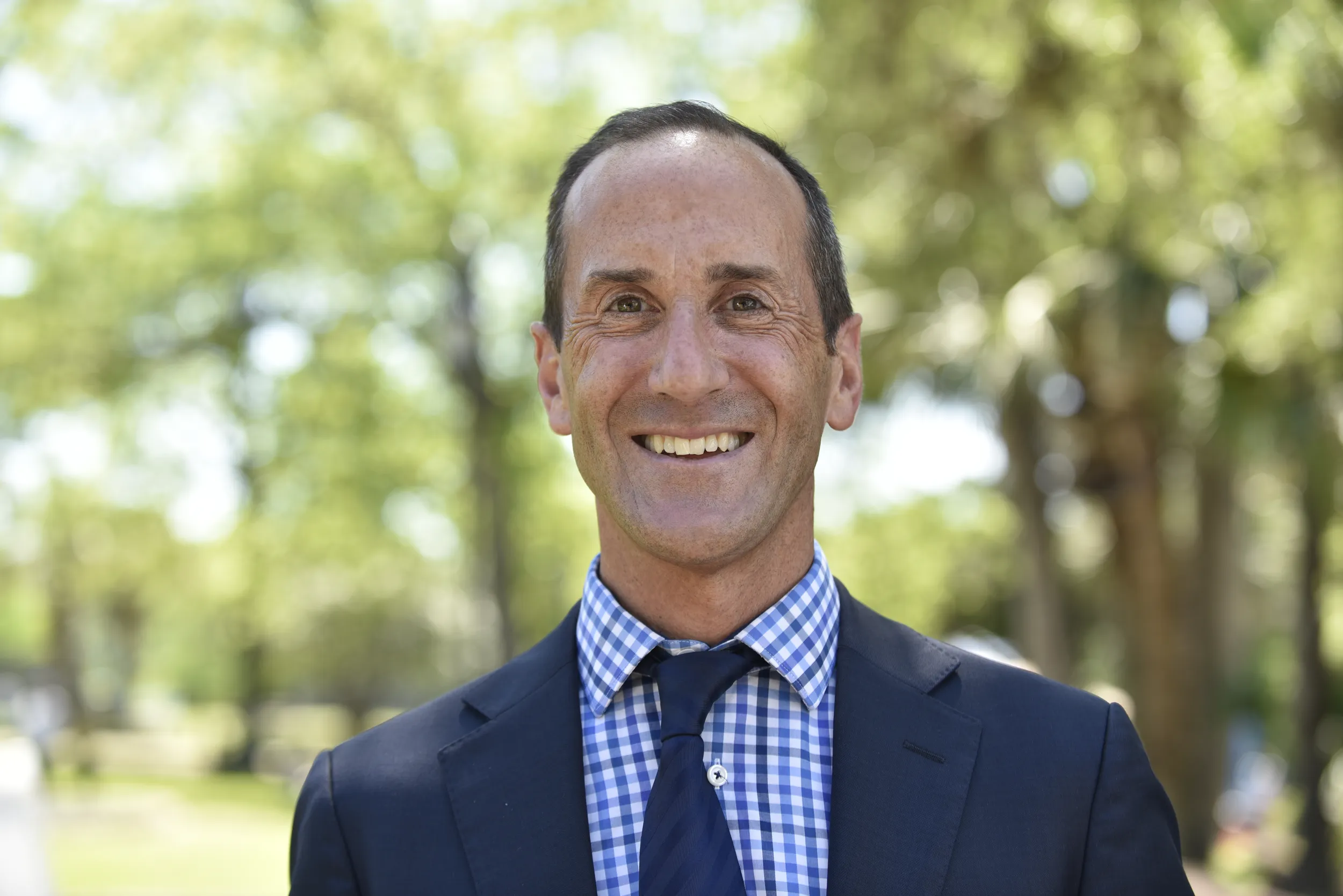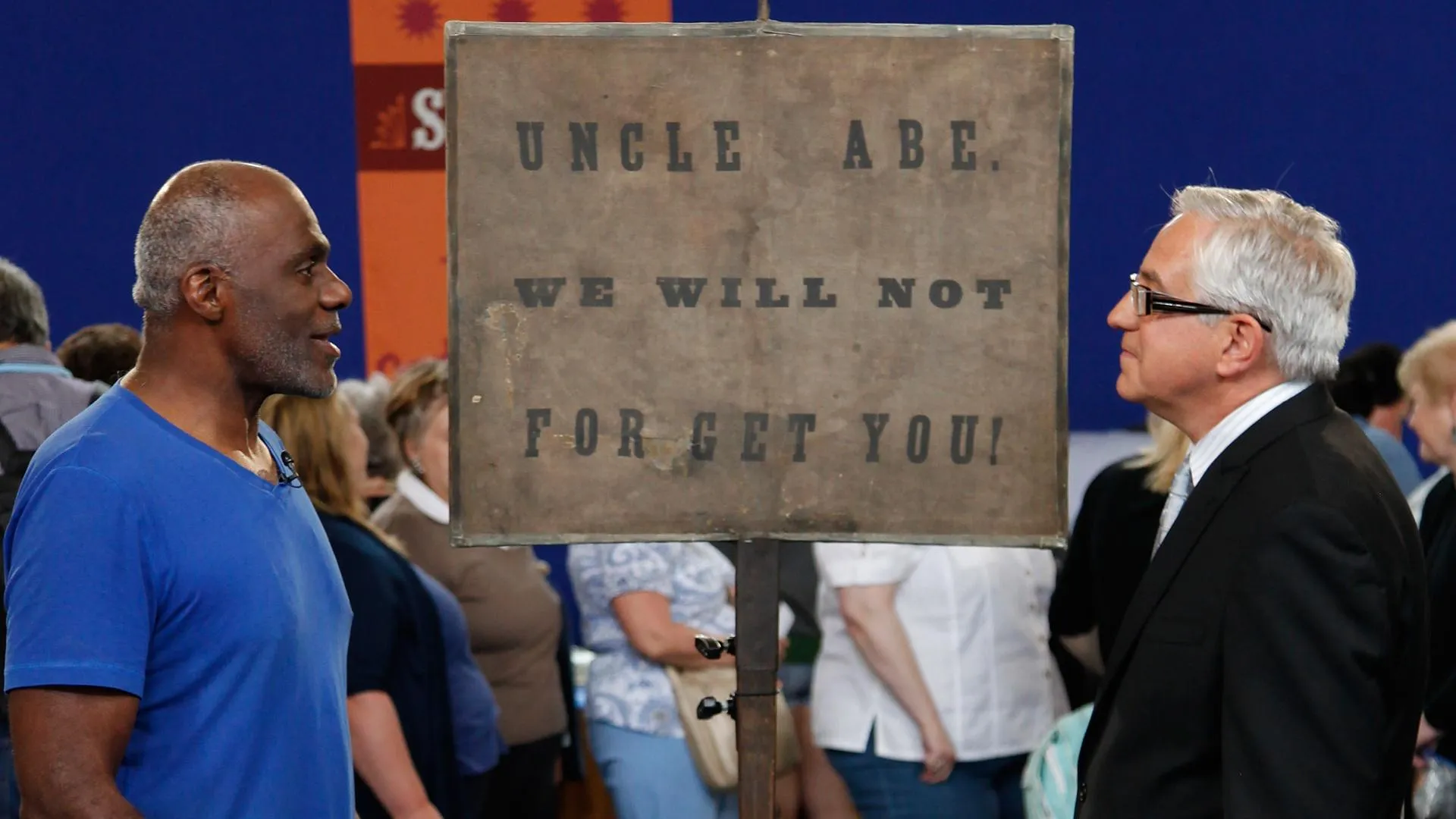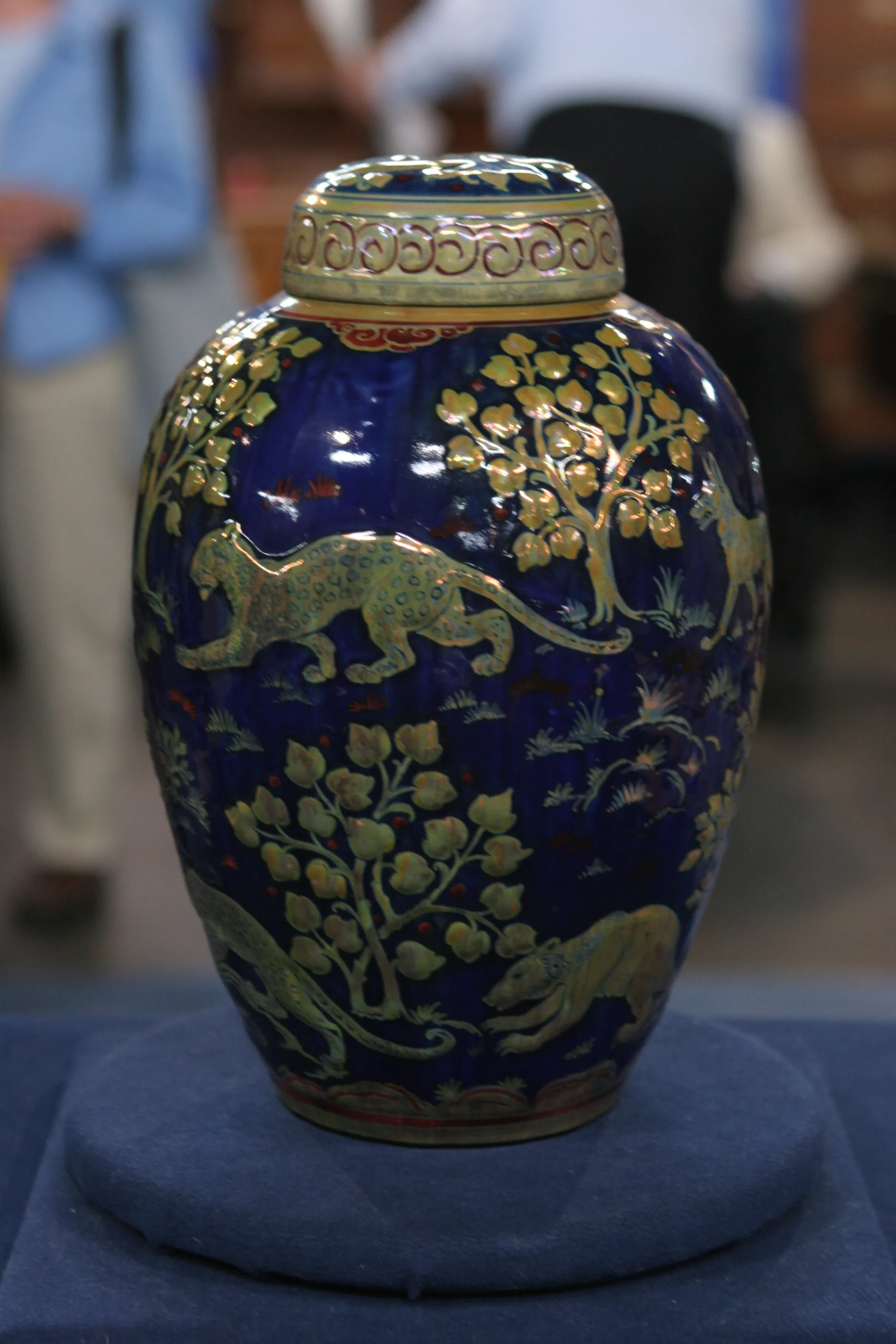GUEST: My mother worked at Spelman College in the late '30s and early '40s. And I would imagine that she purchased or acquired them at that time.
APPRAISER: And do you have any idea how much she bought them for?
GUEST: No, none at all.
APPRAISER: And then she gifted them to you at some point.
GUEST: As part of the estate, my brother and I share them.
APPRAISER: Closest to you is this etching by George Albert Burr. He was an American print maker who worked primarily in Colorado and the Southwest. And his prints are very well known. Something on the order of this etching, this size, sort of a nice, bucolic landscape, brings in the neighborhood of about $100 to $200. Maybe a little bit more, depending on the crowd. That's an auction value. The prints closest to me are two woodcuts by the very well known African-American printmaker Hal Woodruff. Now, Woodruff was born in Illinois and trained as a boy in Illinois and Indiana. And in the mid-1920s, he won a painting prize sponsored by the Harmon Foundation in New York, with which money he used to go and study in Paris, which was sort of a hotbed of modernist art movements at that time. You had Picasso, Chagall. All the big names were active at this time in Paris, and Woodruff was there as a young American artist, soaking all this up. In 1931, he returned to the United States and ended up in Atlanta, and pretty much founded the Art Department at Spelman College.
GUEST: Wow.
APPRAISER: So the provenance that you've given me, that your mother purchased these at Spelman College, is perfect for these. What makes them more interesting is that while he was teaching at Spelman, in 1936, he took a trip to Mexico, ostensibly to apprentice with the Mexican muralist artist Diego Rivera. And while he was there, he produced woodcuts like these, which are extremely scarce prints. He continued to teach and work in Atlanta into the early 1940s, when he took a teaching job in New York at NYU and became probably one of the foremost artists of the Harlem Renaissance. You've got a little bit of staining on this print, but all in all, they're in, I would say, superb, excellent condition for their age. He would have made these in the late 1930s, very small run of prints-- you know, a handful each. On each of them, I would say replacement value would be around $5,000. So on the two, you could say $10,000 for replacement.
GUEST: Oh, my.
APPRAISER: Very nice prints.
GUEST: They are, thank you.
APPRAISER: Very good things come in small packages here sometimes, and you've got two of them.
GUEST: Thank you.












